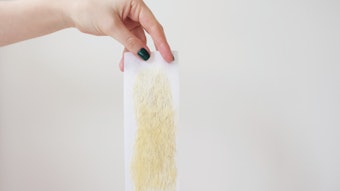This complete list of acne types complements Lydia Sarfati's article "Understanding Acne" from the February 2009 issue of Skin Inc. magazine.
Acne conglobata. Severe hereditary acne that generally causes scarring on the face and back. It appears as irregularly joined nodules which are hard at earlier stages, and then are soft and fluid.
Acne cosmetica. A condition caused by comedogenic ingredients found in hairstyling products, conditioners, certain sunscreens and makeup. Acne cosmetica lesions are of the same shape and size, and can be avoided by switching to noncomedogenic products.
Acne detergents. Acne that is caused by overuse of abrasive cleansers.
Acne excoriee. A psychosomatic disease involving the neurotic picking of the face.
Acne mallorca. Caused by excessive sun exposure, this type of acne is often seen on people who work outdoors.
Acne mechanica. This type is caused by mechanical irritation, such as under the helmet chinstraps in football players.
Acne medicamentosa. Acne caused by medications.
Acne vulgaris. The most common form of acne, often found on teenagers. It is a direct result of an increase in the male hormone androgen. This type of acne normally develops at puberty and can be triggered at any age. It is characterized by a variety of lesions that are visible at any time.
Chloracne. Caused by constant exposure to certain industrial chemicals, such as aromatic halogenated compounds, and the hydrocarbons found in motor oil.
Cystic acne. This is a severe type of acne when the sebum, together with dead cells and bacterial products, ruptures through the follicle wall, causing an inflammatory reaction that may end in scarring. It appears as a large rubbery nodule, often skin colored and surrounded by red inflamed tissue. They can range from 5–20 mm in size.
Steroid acne. An inflammation of hair follicles caused by internal steroids or from topical corticosteroids on the face.











